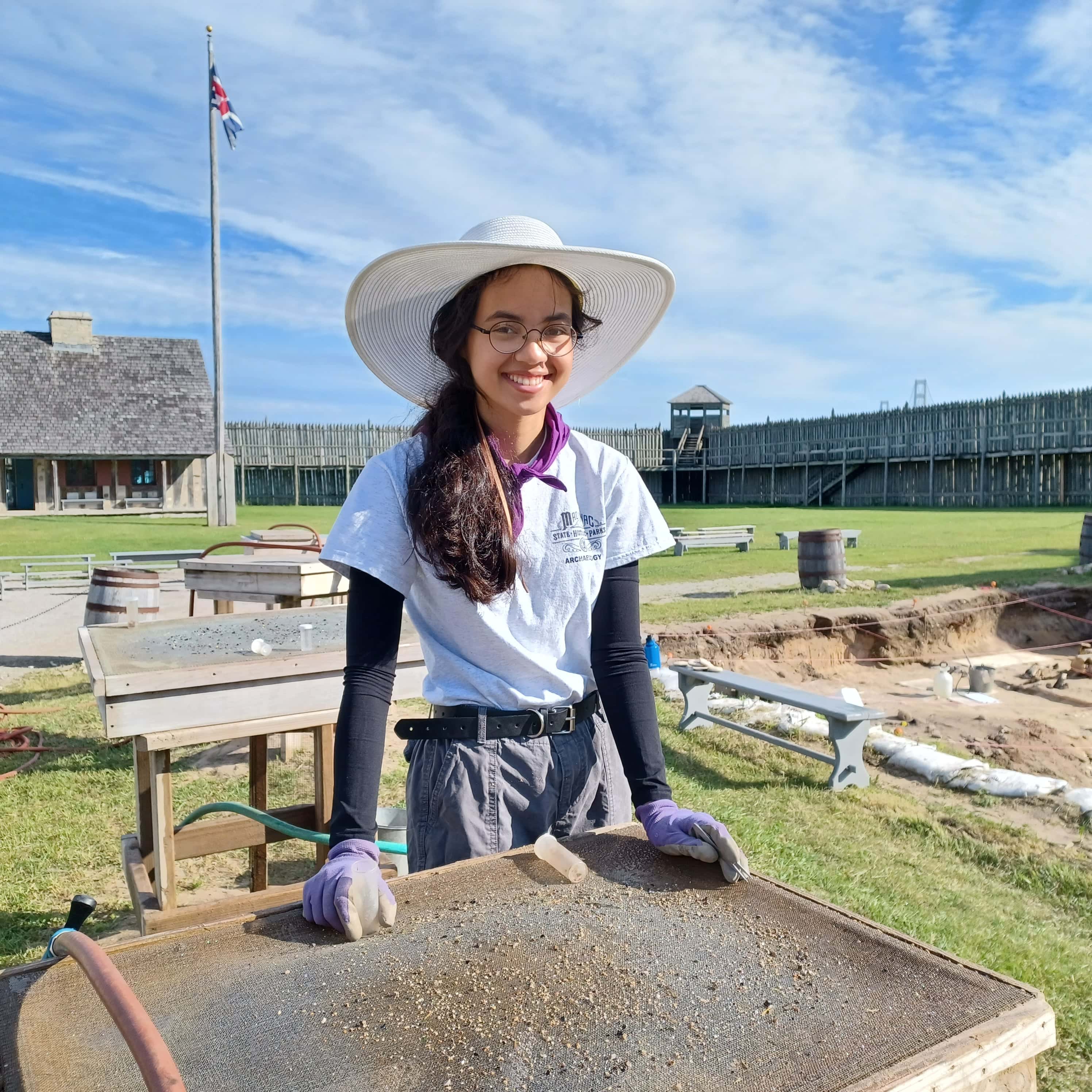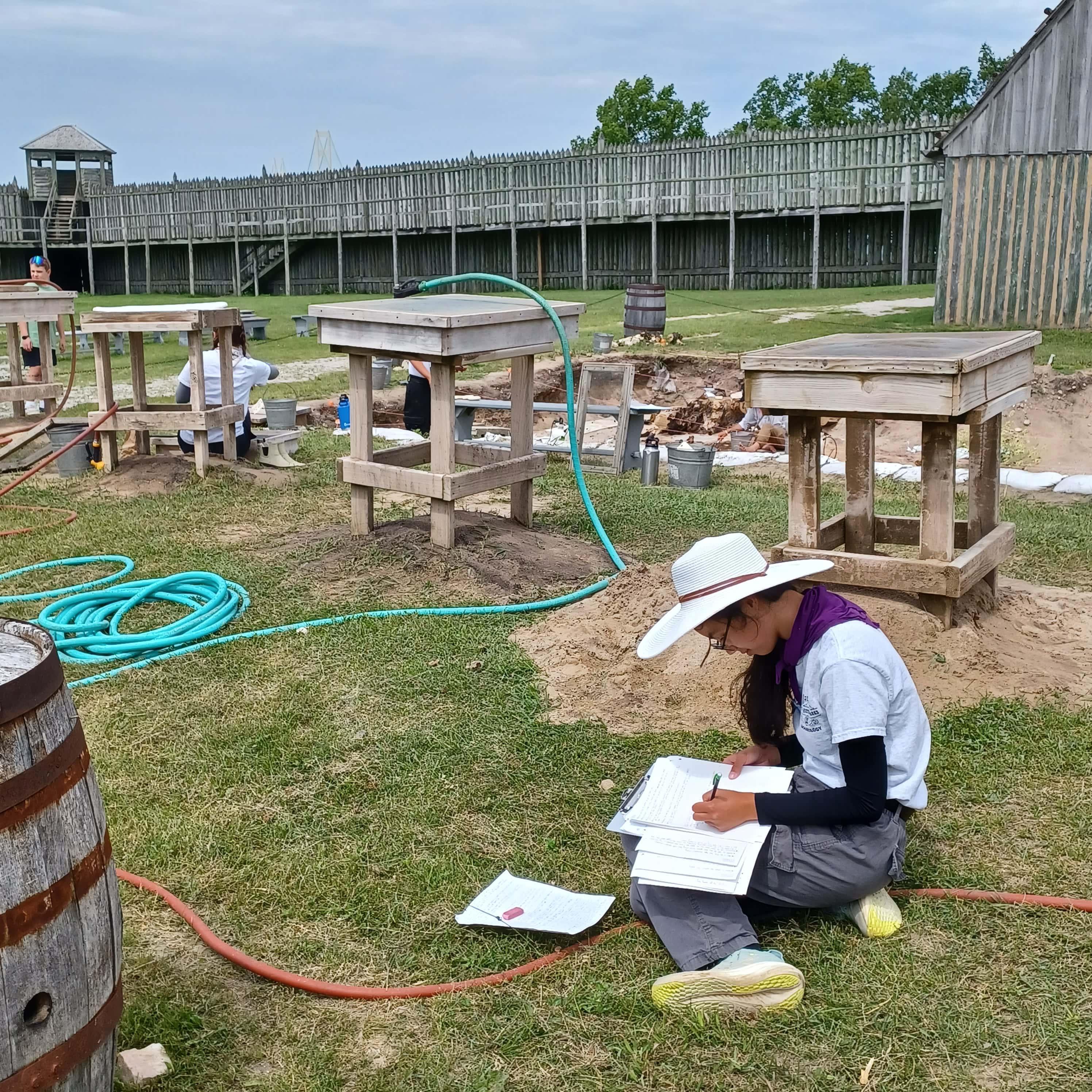Kelly Sullivan graduated in 2024 with a degree in biology from Lyman Briggs College and in anthropology from the College of Social Science. This summer, Sullivan is working as an archaeologist at Michigan’s Colonial Michilimackinac, an 18th-century fort and fur trading village located in Mackinaw City.
Growing up, my family has always made it a point to explore the best places that Michigan has to offer. We went to museums, campgrounds, state parks, lighthouses, historical sites, nature trails and more. One such location happened to be Fort Michilimackinac. Because of that, I have always been interested in the history that surrounds us.
I originally started at MSU with plans to go into veterinary medicine and maybe take a few anthropology classes here and there, but in the spring of my first year, I took “Introduction to Archaeology” with Dr. Stacey Camp and found that I just couldn't let archaeology go. By my second year in, I had added anthropology as my additional major.
Digging into my passion at MSU

During my time at MSU, I had the wonderful opportunity to work with both Dr. Camp and Dr. Jon Frey both in and out of class. I was able to take Dr. Camp’s “Method and Theory in Historical Archaeology” and her “Lab Methods in Archaeology” classes, where I learned more about how to do archaeology. Outside of class, I spent time in the lab cataloging data for ceramics and glass artifacts from the Kooskia Internment Camp in Idaho, and I also was part of the MSU Campus Archaeology crew in the summer of 2023, where we collaborated with Infrastructure Planning and Facilities at MSU and excavated where the first observatory was on campus.
Additionally, I had the chance to go on Dr. Frey’s Art and Archaeology in Ancient Greece study abroad trip in the summer of 2022. During this trip, I worked on organizing photo negatives of the artifacts. After the study abroad trip, I worked with Dr. Frey and a few other undergraduates on transcribing some photo slides for the Gregory Archive, which is a collection of the work of Dr. Timothy Gregory of Ohio State University.
While I was a student at MSU, Dr. Camp had talked about some of her past students working as archaeologists at Fort Michilimackinac, and considering I had such fond memories of the fort, I applied soon after graduating. Getting hired was like a dream and, working as an archaeologist at Fort Michilimackinac is an amazing opportunity. I get to be an archaeologist here, and sometimes it still surprises me.

Unearthing pieces of Michigan history
Life at Colonial Michilimackinac feels like history. Our days as archaeologists here begin at 8:45 a.m. at our equipment shed, where we grab our things and walk as a group past the palisade walls and into the gates. Our excavation is near the parade grounds of the fort, so we get to see much of what is going on. The location of our excavation immerses us in the narrative of life at the fort, with interpreters in their historical garb, demonstrations, tours and the love that people have for the fort.
Our work is a product of history itself, through our use of the original grid system implemented in 1959 when excavation first began. Our current excavation unit was opened in 2007 and was a fur trader’s house during both the French and British occupations of the fort. The rowhouse our building is a part of was originally built in the 1730s when the French expanded the walls of the fort the first time, was rebuilt in the 1760s by the British, and then torn down by the British in 1781 during the move to Mackinac Island.

This particular excavation had been open for many years due to its complexity with there being two root cellars and a tree planted over the north wall of the home around 1910. Even still, we are finding artifacts every day. So far, I have found fish bones, seed beads, lead shot, small pieces of broken glass and even a beaver tooth recently. My coworkers also have fun finds, including an embossed lead seal, a couple of gun flints and a frame of a shoe buckle, among other things. We have not found any gold, though many people ask.